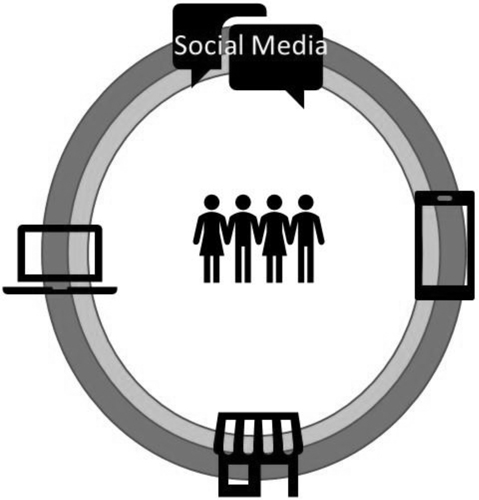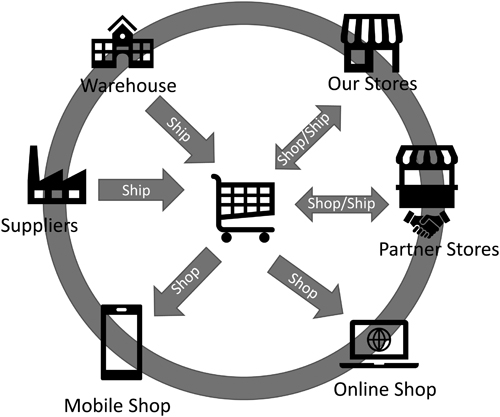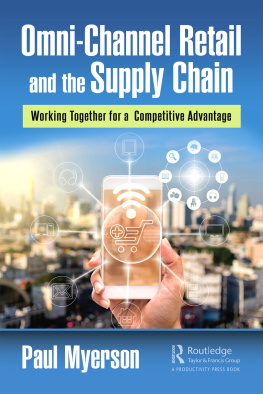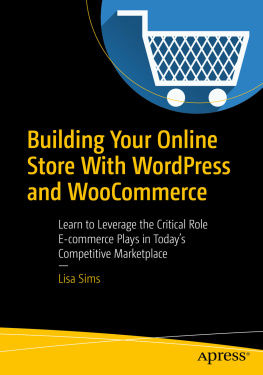The shift to omni-channel represents one of the most profound transformations in distribution and to supply chain as a whole. Getting it right will make the difference between winners and losers in the next few years. A must read to navigate these changing waters.
- Ron Kubera, Senior Vice President and General Manager, E2open
The growth in online retailing represents a revolutionary change that is affecting companies of all kinds. And, the development of omni-channel distribution is a key part of this revolution. Myersons book provides a thorough coverage of what may be one of the most important business developments to hit the business landscape since the Internet.
- Robert J. Trent, Ph.D., Author of Supply Chain Financial Management
Paul Myerson neatly breaks down the omni-channel retail supply chain strategy with practical, step-by-step, guidance for companies to consistently satisfy consumer demand and enhance profit margins while navigating frequent regional market hiccups as well as weathering the occasional global disruption, like what we are facing now with the COVID-19 pandemic.
- William J. Bajor, Ph.D., Director, Graduate and Extended Studies, East Stroudsburg University
Paul Myerson neatly breaks down the omni-channel retail supply chain strategy with practical, step-by-step, guidance for companies to consistently satisfy consumer demand and enhance profit margins while navigating frequent regional market hiccups as well as weathering the occasional global disruption, like what we are facing now with the COVID-19 pandemic.
- Dr. Mikhail M. Sher, Assistant Professor, Department of Management and Leadership, Leon Hess Business School, Monmouth University
Omni-Channel Retail and the Supply Chain
Omni-Channel Retail and the Supply Chain
Working Together for a Competitive Advantage
Paul Myerson

First published 2021
by Routledge
600 Broken Sound Parkway #300, Boca Raton FL, 33487
and by Routledge
2 Park Square, Milton Park, Abingdon, Oxon, OX14 4RN
Routledge is an imprint of the Taylor & Francis Group, an informa business
2021 Taylor & Francis
The right of Author to be identified as author of this work has been asserted by him in accordance with sections 77 and 78 of the Copyright, Designs and Patents Act 1988.
All rights reserved. No part of this book may be reprinted or reproduced or utilised in any form or by any electronic, mechanical, or other means, now known or hereafter invented, including photocopying and recording, or in any information storage or retrieval system, without permission in writing from the publishers.
Trademark notice : Product or corporate names may be trademarks or registered trademarks, and are used only for identification and explanation without intent to infringe.
ISBN: 9780367641979 (hbk)
ISBN: 9781003123415 (ebk)
Typeset in Minion
by Deanta Global Publishing Services, Chennai, India
Contents
Introduction: Where We Are Today
The days of going to the local department store to buy a television, viewing the options available, and making a purchase now seem quaint. The emergence of the Internet, smartphones, social media, and other technologies has opened a world of new options for consumers (and businesses) to review, research, and buy online with an ever-increasing array of delivery options.
The emergence of e-commerce has resulted in what is commonly known today as omni-channel marketing, in which customers engage with companies in a variety of ways, including in a physical store, and online via websites and mobile apps (). This puts the supply chain front and center, as consumers are increasingly demanding, and browse, buy, and return goods through various channels and not just in the traditional brick-and-mortar way. Accomplishing this with high levels of service, while remaining profitable, requires real-time visibility of inventory across the supply chain and a single view of the consumer as they continuously move from one channel to another.

FIGURE 1.1
Omni-channel.
While this is a boon to consumers, it has made the already complex global supply chain even more challenging to manage.
On top of that, the 2020 COVID-19 pandemic has accelerated this omni-channel retail trend as consumers need even more ways to order and additional options for last-mile delivery such as curbside pickup. COVID-19 has exposed the lack of flexibility and readiness, resulting in shortages of everything from toilet paper and meats to personal protective equipment (PPE) and ventilators due to a variety of capacity and inventory allocation issues. It has been a real-life example of the bullwhip effect in action, where variability at the consumer end of the supply chain results in increased variability as you go upstream towards distributors, manufacturers, and suppliers, creating shortages, mis-allocation, and increased costs.
No longer can a manufacturer, distributor, or retailer of consumer products just fill the pipeline and wait for orders to come in. Now they must anticipate the various purchase and delivery items, while at the same time minimizing costs. To do this is no easy task, requiring a lean, agile, and responsive supply chain.
Until now, there was no existing playbook for organizations to navigate their way through this new world. This book describes the impact of omni-channel marketing on the supply chain and logistics functions and is intended to help management not only meet the needs of todays ever-changing world but also to anticipate what may be required in the future to achieve superior customer service, profitability, and a competitive advantage.
E-commerce has emerged as an important part of a company's omni-channel marketing program. Achieving success requires an agile, lean supply chain with a comprehensive strategy on how to get there.
Many e-commerce companies sell a variety of products, and each type of product establishes different strategic needs. For example, functional products require lean and flexible network strategies, while innovative products require more responsive or agile strategies.
Some key factors to consider when employing an e-commerce strategy include:
- Individual product characteristics
- Demand volatility
- Product variety
- Product life cycle length and position
- Criteria for orders, profit margins, and dominant costs for example, physical vs. marketing
- Quality of information available
- Type of forecast used qualitative vs. quantitative
In many cases, considering all these factors may result in the need to develop segmented strategies for each supply chain and individual groups of products.
E-commerce has evolved into a combination of retail and industrial product types and industries, as well as Internet technology and devices, the transportation and logistics sectors, and inventory tracking and fulfillment systems ().

FIGURE 1.2
Omni-channel retail supply chain.
As a result, e-commerce requires strategies that address the following major elements:











 FIGURE 1.1
FIGURE 1.1 FIGURE 1.2
FIGURE 1.2